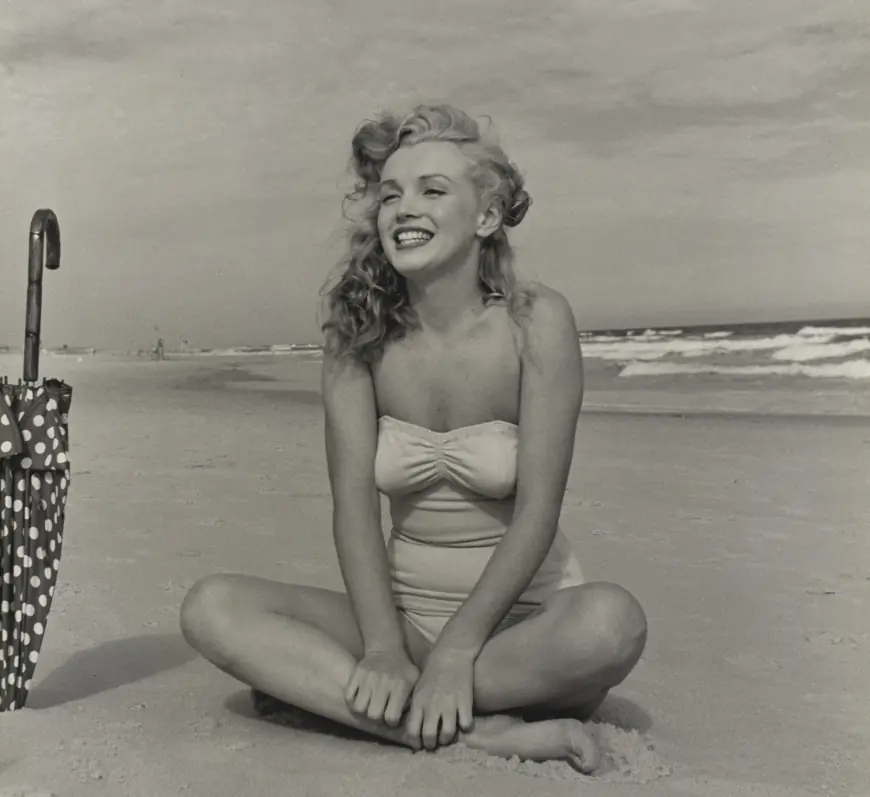One Fine Show: ‘Kertész, Capa and the Hungarian American Photographic Legacy’ at the Virginia Museum Fine Arts
For proof of the collective talent on display, look no further than André de Dienes' portrait of Marilyn Monroe from 1949.



Welcome to one fine show, where Observer highlights a recently opened show at a museum outside New York City, a place we know and love that already receives plenty of attention.
Those who have had the unique pleasure of seeing a movie by Federico Fellini with me have already heard this spiel: I believe that Italians have a genetic trait that makes them better at filmmaking than other nationalities. It has to be genetic because Martin Scorsese was born in Flushing but shares the facility with the language of film seen in the work of Pier Paolo Pasolini, Michelangelo Antonioni, Sergio Leone, Bernardo Bertolucci and Paolo Sorrentino, among others. How else to explain all this talent?
A related but less insane theory is put forth by “American, born Hungary: Kertész, Capa and the Hungarian American Photographic Legacy,” a just-opened show at the Virginia Museum of Fine Arts. The show features over 170 photographs from André Kertész, László Moholy-Nagy, Martin Munkácsi, Robert Capa and György Kepes, all of whom reinvented themselves in America and helped define the medium with shots that could be surreal, documentary, emotional and compositionally radical all at the same time. These results emerged from being on the front lines of the modern world’s birth, but that and an eye can’t explain their impeccable batting averages. As Capa once said: “It is not enough to have talent; you also have to be Hungarian.”
SEE ALSO: How Leonardo Drew Plays With Entropy to Prove Chaos Can Transform into Meaning
For proof of the collective talent on display, look no further than André de Dienes’ portrait of Marilyn Monroe from 1949. Do you know how hard it is to photograph Marilyn Monroe? De Dienes’s portrait has something of the corporeal earthiness seen in Capa’s Near Cerro Muriano (Cordoba front) (c.1936), which is probably the most famous work in the show and depicts a soldier in the Spanish Civil War, collapsing after being shot in the head. Both bodies have stories to tell, but they don’t seem to be speaking a language known to any of us.
There are some good photos of presidents here—Franklin Delano Roosevelt (c. 1939) by Marcel Sternberger and JFK Campaigning (1960) by Cornell Capa—but presidents are really only compelling in the way that they merge the body with architecture. The bodies of those two failed them rather publicly; the shots of actual architecture in this exhibition diagram perfection. André Kertész was the master of this. His fire escapes and skyscrapers offer uncannily complementary angles, with nothing out of order, not even their shadows. Lost Cloud (1937) shows even the
Moholy-Nagy is one of the older and more avant-garde artists on display. His work is pure experiments in form without any ties to reality. There seems to be a dreamlike quality across all these photographs. Coming to America from Hungary back then probably did feel like entering a dream, with plenty of skyscrapers and Marilyn Monroe to go around.
“American, born Hungary: Kertész, Capa and the Hungarian American Photographic Legacy” is on view at the Virginia Museum of Fine Arts through January 26, 2026.
What's Your Reaction?









































































































